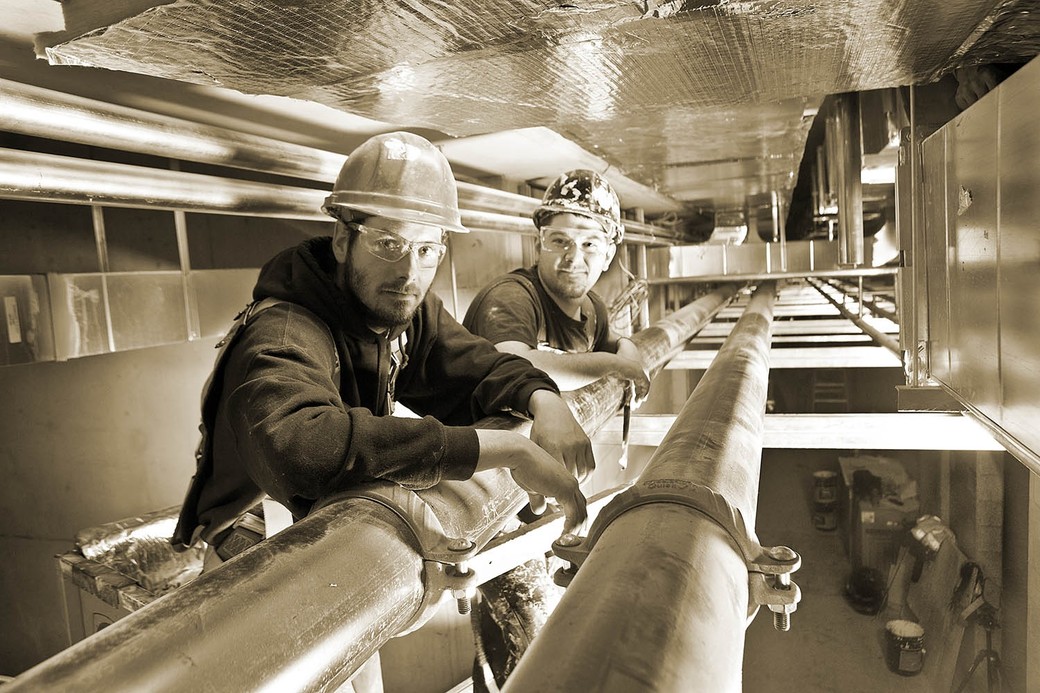
Canada’s Building Trades Unions: How One Union is Fighting for Canada’s Economic Future
Representing 15 unions and 60 different skilled trades, Canada’s Building Trades Unions (CBTU) has the job of keeping the construction industry in Canada safe, high-paying and fair. These challenges, however, are only a few of the many facing the CBTU and Canada’s construction industry.
 Half a million members strong, the CBTU will still have to draw from new demographics to fill the enormous demand for skilled trades workers that is closing in fast.
Half a million members strong, the CBTU will still have to draw from new demographics to fill the enormous demand for skilled trades workers that is closing in fast.
With an aging workforce and growing demands for new infrastructure, it is estimated 320,000 new skilled construction workers will be needed in Canada by 2020.
Bracing for this, the CBTU is targeting under-represented groups in the industry, like new Canadians, First Nations and women to consider joining one of Canada’s fastest growing industries.
 As it stands, women represent only four per cent of the construction trade work force in Canada. Journeyman is a CBTU initiative looking to change that. Founded by iron metalworker Jamie McMillan, with the belief women can be successful in the male-dominated industry, Journeyman is a nationwide hub for tradeswomen. It promotes, supports and mentors women in the trades.
As it stands, women represent only four per cent of the construction trade work force in Canada. Journeyman is a CBTU initiative looking to change that. Founded by iron metalworker Jamie McMillan, with the belief women can be successful in the male-dominated industry, Journeyman is a nationwide hub for tradeswomen. It promotes, supports and mentors women in the trades.
CBTU is also taking aim at young Canadians by initiating a national recruitment program to inform high school students about the benefits and rewards in the often overlooked industry. Introductory level trades classes in high schools will get the career option in students’ minds early, while bursaries, grants, scholarships and mentorship programs for apprentices will offer further incentives.
 Retention is also a key component of the recruitment program, as CBTU offers the most intensive and comprehensive training system for tradespeople in Canada, ensuring grads are well equipped with the tools to enjoy a long and rewarding career. Still, there is a along way to go to meeting the growing demand. The biggest hurdle in keeping the industry healthy is changing the perception of the industry itself. “Parents don’t tell their kids to become crane operators or bricklayers, instead they tell them to become doctors or lawyers,” says Lindsay Amundsen, CBTU workforce development coordinator.
Retention is also a key component of the recruitment program, as CBTU offers the most intensive and comprehensive training system for tradespeople in Canada, ensuring grads are well equipped with the tools to enjoy a long and rewarding career. Still, there is a along way to go to meeting the growing demand. The biggest hurdle in keeping the industry healthy is changing the perception of the industry itself. “Parents don’t tell their kids to become crane operators or bricklayers, instead they tell them to become doctors or lawyers,” says Lindsay Amundsen, CBTU workforce development coordinator.
In reality, says Amundsen, young Canadians who pursue a trade usually graduate debt-free and are already making good money, while their university friends come out with a massive student debt and struggle to find a career in their field. It’s an issue that is well documented, and one that will hopefully drive more young Canadians into an industry where they are desperately needed.
 The sheer size of the construction industry means it has an effect on all Canadians, as it represents 14 per cent of our GDP. Every construction job produces seven other jobs in different sectors.
The sheer size of the construction industry means it has an effect on all Canadians, as it represents 14 per cent of our GDP. Every construction job produces seven other jobs in different sectors.
The solutions to meeting the demand are equally as far reaching, as immigration policy plays a huge factor in determining whether or not Canada is up to the task. “Immigration is important because our country is not growing, and we need a system that attracts the right people,” says Christopher Smiley, CBTU. Smiley is currently working with Canadian cabinet ministers to get more foreign trade credentials recognized, making the transition for new Canadians into trade careers easier and faster.
 As Canada’s construction industry grows and changes, new issues naturally arise, like the ones facing the mobile construction worker, who works and lives in isolated areas, often for months at a time.
As Canada’s construction industry grows and changes, new issues naturally arise, like the ones facing the mobile construction worker, who works and lives in isolated areas, often for months at a time.
However, the CBTU is there to find creative solutions to these issues and others that arise. “We represent every Canadian who goes to work at construction sites every day,” says Smiley.
Photos: Courtesy CBTU









